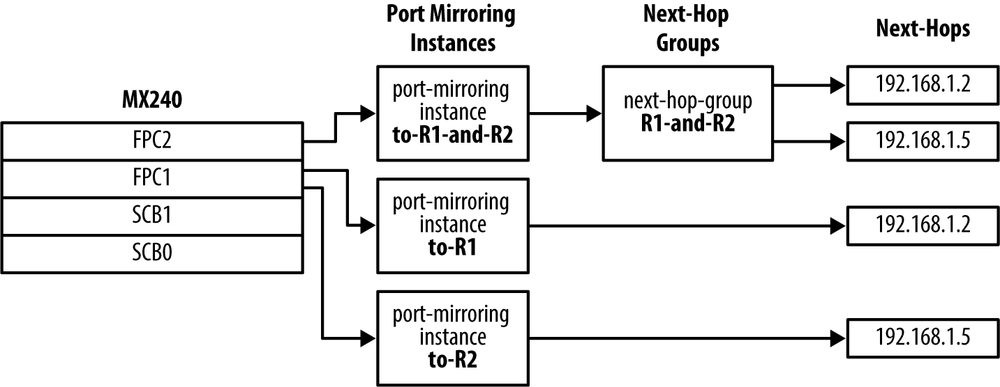Port Mirroring
One of the most useful tools in the troubleshooting bag is port mirroring. It allows you to specify traffic with a firewall filter and copy it to another interface. The copied traffic can then be used for analysis or testing. One of the most interesting use cases I recall is when a customer wanted to test a firewall’s throughput on production data, but obviously not impact production traffic. Port mirroring was the perfect tool to match the production data and send a copy of the traffic to the firewall under test, while the original traffic was forwarded to its final destination on the production network.
Junos has supported port mirroring for a very long time, and the architecture is very simple and flexible. There are four major components that make up port mirroring, as shown in Figure 7-15: FPC, port mirroring instances, next-hop groups, and next-hops.

Figure 7-15. Port Mirroring Workflow.
Port mirroring instances are associated with FPCs, and up to two port mirroring instances can be associated with a single FPC. This concept is similar to other Trio inline functions where the FPC is associated to an instance or inline service. The next component is a next-hop group; this is simply a collection of interfaces and associated next-hops. The use of a next-hop group is optional. The last components are the next-hops that reference a specific interface and next-hop.
However, ...
Get Juniper MX Series now with the O’Reilly learning platform.
O’Reilly members experience books, live events, courses curated by job role, and more from O’Reilly and nearly 200 top publishers.

